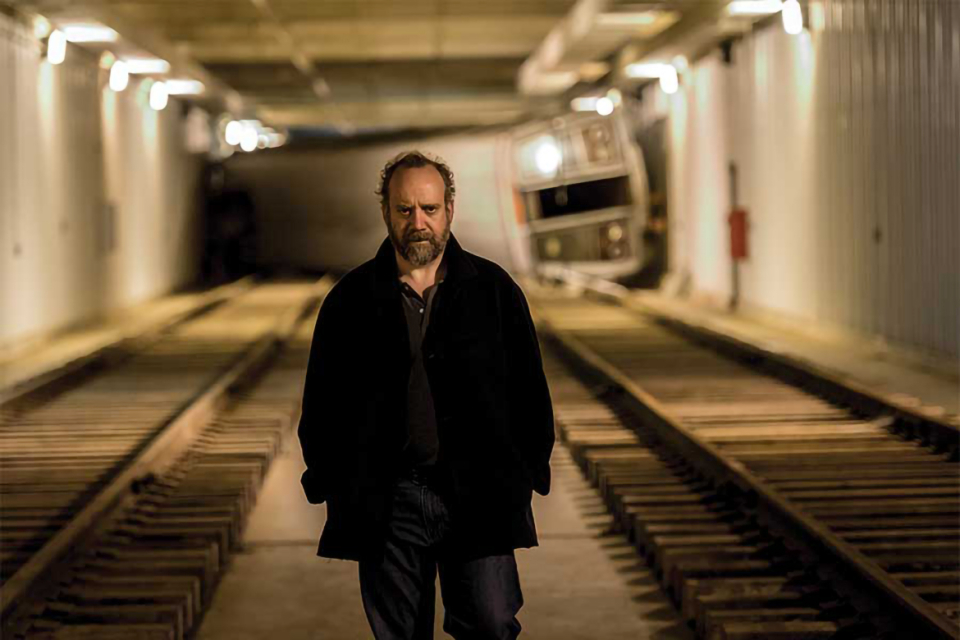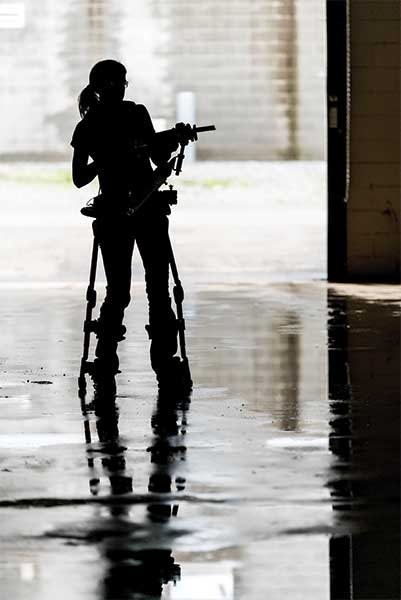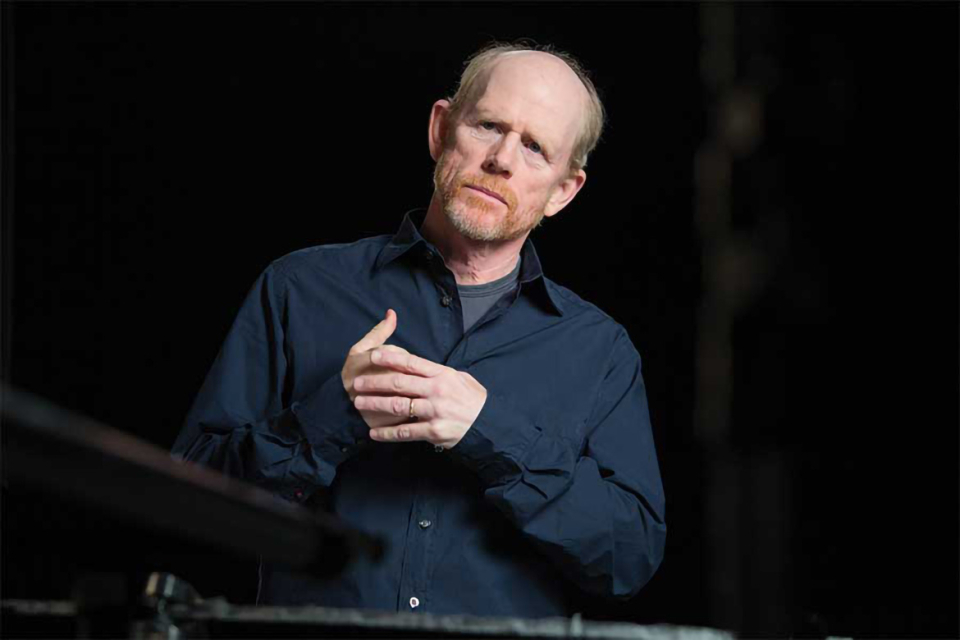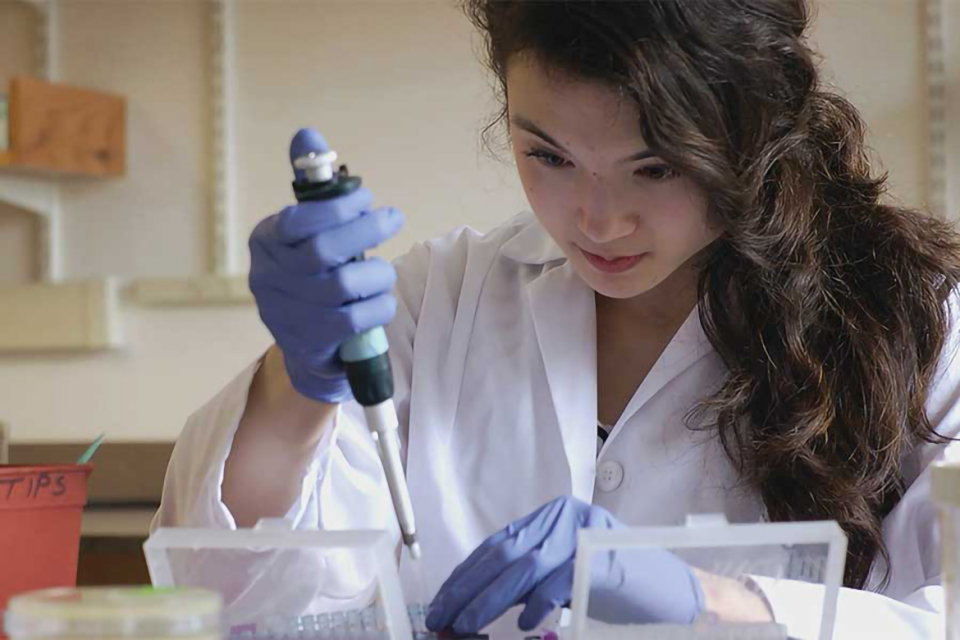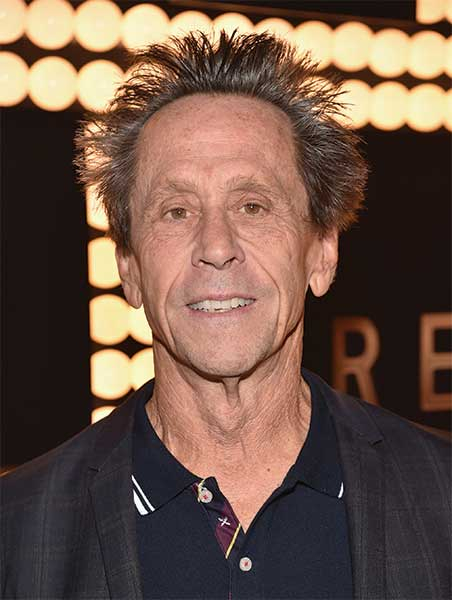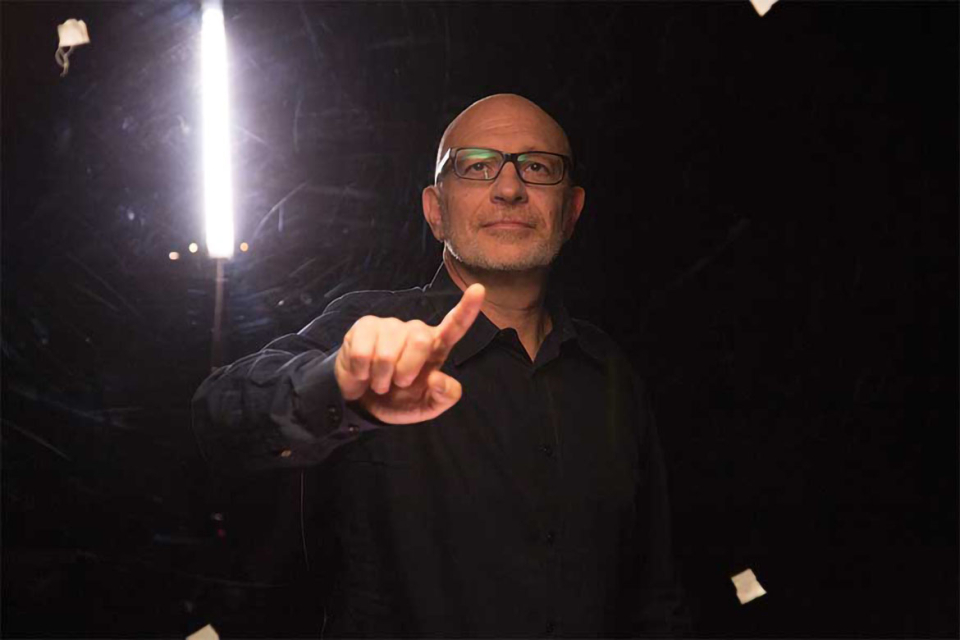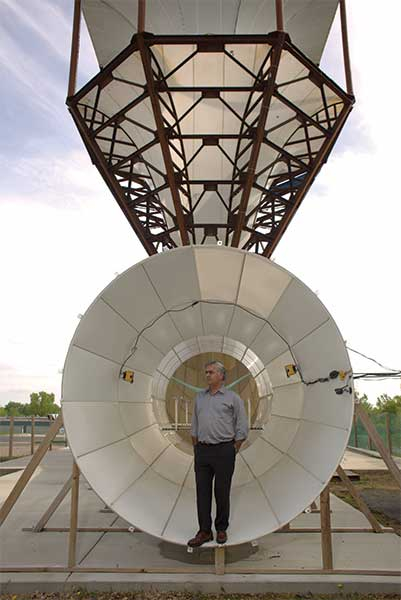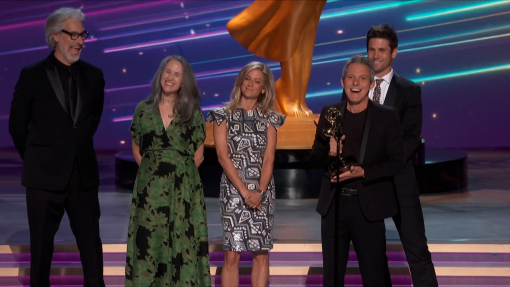Invited to direct an episode of National Geographic’s science series Breakthrough, actor Paul Giamatti jumped at the chance.
“I am definitely interested in science,” he says. “I don’t understand a lot of it, but I have a lot of curiosity.”
Cutting-edge advances in science are what Breakthrough is all about. Each of the initial six episodes — which debuted late last year and are now available on the likes of Amazon and iTunes — focuses on a different subject area and introduces various scientific revolutionaries and their innovations, which are all designed to optimize human existence.
National Geographic Channel joined forces with General Electric to present the series, which is produced by Imagine Entertainment and Asylum Entertainment.
Giamatti threw himself into his episode with the exuberant air of the science geek and sci-fi fan that he is. "More than Human" features cyborgs, or people who use robotic devices, like exoskeletons, to serve as prostheses — or to make them superhumanly strong (think Iron Man or RoboCop).
To better understand the technology, Giamatti visited a Georgia training center for first responders, where he watched a tester wearing a 35-pound exoskeleton pry open the doors of a crashed car.
At a cyborg research lab, Giamatti himself cheerfully submitted to techniques that help people adapt to bionic hands. One required him to tuck his own hand under a table, where a therapist stroked it with a brush while also stroking a fake hand visible above the table. It didn't take long for him to start believing the fake hand was his.
"It was so fun to do," says Giamatti (seen this past season in Showtime's Billions as a driven U.S. attorney), of his first directing gig. "I don't know why I don't do this all the time."
Bold-faced Hollywood names directed all the episodes. Besides Giamatti, they include Angela Bassett (the American Horror Story actress last year directed Lifetime's Whitney Houston movie), whose episode, "Water Apocalypse," explores solutions to the global fresh-water crisis.
Peter Berg (director-executive producer of The Leftovers and Friday Night Lights, among many others) directed and narrated "Fighting Pandemics," which examines the Ebola virus and how to keep it in check.
Brett Ratner (executive producer of The Revenant, director of the upcoming Beverly Hills Cop 4) directed "Decoding the Brain," which delves into unmapped aspects of the brain that may help people with mental disorders.
Ron Howard (an Oscar winner for directing A Beautiful Mind, an Emmy winner for producing From the Earth to the Moon and an executive producer of Breakthrough) directed and narrated "The Age of Aging," which presents a future in which disease is postponed until the very end of life.
And Akiva Goldsman (an Oscar winner for his adapted script of A Beautiful Mind) directed "Energy on the Edge," which transports viewers to various alternative energy projects, including Nevada's Crescent Dunes, where thousands of heliostat mirrors collect solar electricity using molten salt.
"What makes it relevant," says Courteney Monroe, CEO of National Geographic Global Networks, "is that these breakthroughs are happening right now and will impact our lives right now."
Inspired by the premise of ESPN's 30 for 30 docu-sports program, Breakthrough originated in a brainstorming session between Brian Grazer, co-chairman of Imagine Entertainment, and Beth Comstock, vice-chair of business innovations at General Electric, both of whom would become executive producers of the series.
Grazer recalls saying to Comstock: "I think the best thing we could do together is the romantic version of how GE was invented. [Thomas] Edison saw a significant problem on the planet and solved that problem by creating electricity. What a profound and beautiful thing. Let's bring it up to today. Let's feature scientists who are solving problems on the planet."
With its global reach and vast picture and video library, National Geographic seemed like the perfect vehicle for the show. GE has tremendous archives, too, as well as research facilities. “So it happened very organically,” Grazer says. He helped bring other players aboard, including his Imagine co-chair, Ron Howard, and Asylum Entertainment, which produced 30 For 30 and has worked with Imagine on other projects.
Representatives from all the partners met to hash out ideas for episodes. More urgent scientific quandaries got higher priority, while ideas that seemed better suited to print articles were nixed.
"We dinged the bad ones out," Grazer says, to focus on possibilities that had genuine scientific merit, a hook for viewers and solid cinematic potential, including good characters, human drama and compelling visuals.
Next season, he adds, "We want to make them even more cinematic."
Grazer says they also cast a wide net over Hollywood for potential directors. The gig is largely a labor of love. But, he says, candidates are already lining up to direct episodes in the next round. "Anyone well-meaning and who understands the parameters qualifies."
Howard will likely direct another episode. "It suits Grazer and me to a T," he says. Howard notes that in addition to being a very curious kind of guy, he recently completed a documentary about the early touring years of the Beatles, which has whetted his appetite for documentary-style work.
His Breakthrough episode, "The Age of Aging," features researchers who are studying ways to modify the aging process so that people can experience a higher quality of life for longer — a sort of fountain-of-youth quest that may one day lead to a new normal. Investigators at California's Buck Institute for Research on Aging believe such a modification is a real possibility, and it may require a change in just one gene.
The episode shows them taking their case to the FDA for permission to run clinical trials.
This focus on healthier oldsters was a bit of a return for Howard. At 29, he directed Cocoon, an Oscar-winning sci-fi fantasy about a group of retirement home residents rejuvenated by aliens. "I thought there was a connection," Howard says, noting, "Other directors were likewise fascinated by their subjects and tried to put their stamps on them."
One problem that these directors face is that a lot of scientific research simply doesn't lend itself to exciting visuals. Talking heads, lab mice and technicians hunched over computers don't make for gripping entertainment.
Luckily for Howard, mankind has a long and twisted relationship with potions, elixirs and miracle cures to slow aging, and there's a backlog of now-laughable historical anti-aging ads to leaven the subject material. He took full advantage.
The producers also injected some playfulness at Howard's expense. Since his face is so well known, primarily from his early roles on The Andy Griffith Show and Happy Days, they collected photos of him from childhood to now, age 62, to create a kind of flip book that shows the effects of aging.
"We had to talk Ron into it," says Kurt Sayenga, also an executive producer of the series, explaining that Howard didn't initially want to become the poster child of the baby boomer set. "But he came around."
As the showrunner for Breakthrough, Sayenga had to think globally and coordinate complicated shoots with scientists around the world. So it's only appropriate that the show has been broadcast in almost 200 countries and in 45 languages. "Overall, it's a complex series," he says modestly.
Giamatti, for instance, flew to Brazil, Stockholm, Boston and Georgia to meet firsthand with scientists and other innovators of cyborg technology.
A shoot for the episode "Water Apocalypse" captured scientists in waters off Australia as they tried to tether a 60-ton buoy to the ocean floor, the last step in an elaborate four-year operation to install an underwater system that desalinates water while generating electricity.
For the same episode, the producers sent a crew to a water-deprived village in Ethiopia to shoot the construction of a novel water collection tower. The invention, by Italian architect Arturo Vittori, accumulates condensed moisture found in the environment, such as from rain or fog. But no one was absolutely certain everything was going to go as planned.
"It was really tense," Sayenga says, recalling how, just as Vittori and his local assistants were putting the final touches on the 30-foot structure, a storm came along and ripped it down. Luckily, Breakthrough also embraces scientific failures. "The point of the series is not that everything works," Sayenga says. "Failure is part of endeavor."
And, as it turned out, the tower was installed on time. The next scene explodes with villagers conducting a joyous dance around it. The successful fresh-water operation, however, has triggered a new problem, Sayenga says. "A local lady comes at night and steals the water."
Sayenga can't yet talk specifics about next season, but he's got a number of treatments in the works and says that genome editing "is definitely the focus of an episode…. Like any technology, it is a double-edged sword."
There is no shortage of innovation to point a camera at, agrees Monroe, a marketing guru at HBO before joining National Geographic. “The true rock stars are the scientists themselves,” she says, pointing out something that’s apparent in every episode of Breakthrough: The scientists are passionately driven by their ideas, no matter how crazy or unlikely those concepts may seem at first.
The show spotlights one scientist who believes it is possible to harness the power of artificially controlled tornadoes — as well as an environmentally conscious beer brewer who tries and fails and tries again to generate electricity from his wastewater output.
Determination also spurs that group of researchers in "The Age of Aging," who want to extend humans' healthy years. "What happens if we don't succeed?" one asks during a meeting. Another responds half-jokingly: "We'll die trying."
Ian Crozier, the physician in "Fighting Pandemics" who became infected with Ebola while caring for patients in Sierra Leone, stands out as one of the biggest heroes of the show's first season. That episode is also probably the most disturbing. It depicts the gruesome effects of the virus and the poignant human drama that unfolded when, in 2014, Ebola devastated parts of Africa and appeared poised to leap to America.
Lab technicians braved high risk to conduct tests in an effort to halt and control the deadly virus. Viewers also learn that Crozier fought off the virus not once, but twice. After he recovered, he returned to West Africa to continue his work.
"He epitomizes everything good about medical research: people who are making a difference," Sayenga says. "And he's super humble."
"A lot of it is hope — they have a hopefulness," he says of the researchers. "That's what's different with this series. It's not giving a lot of dystopian fantasies. I'm all for zombies. But at the same time, it's not necessarily the arc of the human story. I like to think we are still going upward."

